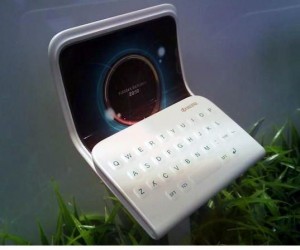Nokia’s self charging cellphone coming soon
The Nokia Research Centre in Cambridge, England, is working on a prototype system that would eliminate the traditional cell phone charger. The system collects energy from ambient radio waves emitted by antennas, TV masts, Wi-Fi transmitters, and the like. This might all sound uber-scientific, but we’ve been using this technology for years. Have you ever exited a store, only to hear the beep, beep, beep of an accusing alarm system? Many retailers use radio frequency identification to prevent theft and track inventory. Like RFID tags, the Nokia phones would catch radio waves across a range of frequencies, harnessing them for power.

The Nokia Research Centre has said the technology will take three to five years to develop. Though this would presumably be the first time electromagnetic radiation is applied to a mainstream consumer product, wireless charging has already hit the market. This month, Palm introduced a wireless charger, the Touchstone, for its much-anticipated Palm Pre.
